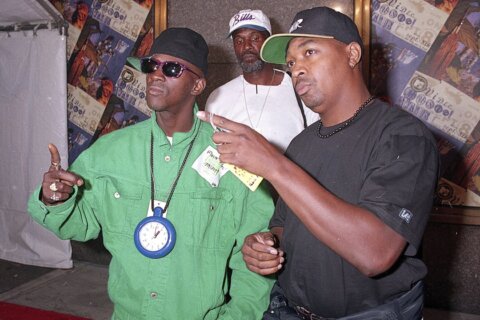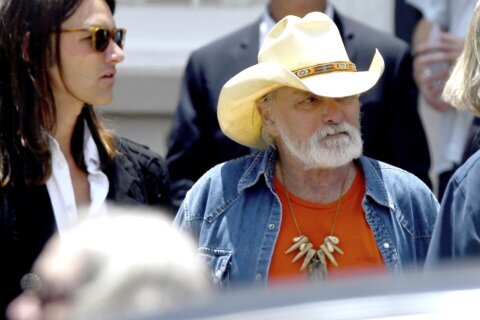WASHINGTON — Angelina Jolie turned the 1996 video game into a 2001 movie blockbuster.
This weekend, Alicia Vikander stars in the reboot of “Tomb Raider,” an action-adventure flick that is actually far more enjoyable than expected, but one that recycles far too many elements from Steven Spielberg’s superior gem “Indiana Jones and the Last Crusade” (1989).
Feisty 21-year-old Lara Croft (Vikander) has fended for herself since her adventurer father, Lord Richard Croft (Dominic West), went missing decades ago while searching for the remains of Japan’s first queen, Himiko. Scraping by on humble boxing and cycling paychecks, she could receive her dad’s vast inheritance if she just signed the dotted line admitting that he is dead.
Suddenly, a hopeful clue arrives, causing her to launch a dangerous mission to find him, braving the jungles, rapids and cliffs of a remote Pacific island. Along the way, she must evade villain Mathias Vogel (Walton Goggins), the leader of an expedition hired to locate Himiko’s tomb and give the remains to Trinity, a shady corporation that wants to rule the world.
Vikander was masterful in “Ex Machina” (2015), won an Oscar for “The Danish Girl” (2015), was underrated in “The Light Between the Oceans” (2016) and is now a worthy successor to Jolie as Lara Croft. In fact, I’ll venture to say that this “Tomb Raider” is better than 2001 version, dressing Vikander in a rugged tank top and cargo pants rather than the booty shorts of Jolie.
This new Croft is an inspiring heroine, slinging arrows, scaling cliffs and leaping across chasms, routinely gasping as her strengths are pushed to the limit and yelping in pain each time she’s wounded. These primal moans could have been played for sex appeal, but to the film’s credit, they come across as gutsy gruntwork that paint Vikander as a believable badass.
For this reason, the first 90 minutes fly by, reminding us how thrilling it is to watch adventure flicks with our popcorn frozen mid-bite as we await the hero’s safety. This roller coaster is the work of aptly named Norwegian director Roar Uthaug (“The Wave”), composer Junkie XL (“Wonder Woman”) and cinematographer George Richmond (“Kingsman: The Golden Circle”), who trained under three-time Oscar winner Emmanuel Lubezki on “Children of Men” (2006).
Where the movie falters is not in its visual construction, but in the final third of its script. Co-written by Geneva Robertson-Dworet and Alastair Siddons, the screenplay borrows too heavily from Indy’s “Last Crusade,” evolving from a loving homage to a lazy carbon copy.
You’ll note that West provides similar “daddy issues” to Sean Connery, including a laugh line berating Croft for not burning his research and leading the baddies straight to Himiko, just as Connery hilariously chided Harrison Ford for bringing the pages of the Grail diary right into the lion’s den of Nazi Germany. It’s so similar that you half expect Marcus Brody to pop up.
The comparisons become even more obvious once we enter the booby-trapped passages of Himiko’s tomb, featuring all of the land mines, spikes and rolling doors that leave a trail of skeletons from unlucky past adventures. Just like “Last Crusade,” Croft must pass three tests to prove her worth, but none of them are as wondrous as the ones cracked by Indiana Jones.
While Indy knelt in prayer in “The Breath of God” (“Penitent men will pass”), Croft uses prayer stones to open a door. While Indy stepped across a crumbling alphabet floor in “The Word of God” (“In Latin, Jehova begins with an ‘i'”), Croft’s floor similarly drops out beneath her. And while Indy took a leap of faith onto an invisible bridge in “The Path of God” (“Only a leap from the lion’s head”), Croft simply crosses her canyon with a horizontal ladder. Uninspired.
By the time we reach Himiko’s tomb, we realize the writers have “chosen poorly.” While Indy tricked his villain to choose the wrong Holy Grail, Croft resorts to combat against her villain, whose henchmen turn into zombies upon opening Himiko’s sarcophagus (i.e. Tom Cruise’s “The Mummy”). It was far more rewarding to watch Indy bait his antagonist’s hubris, then be tempted himself, making a spiritual statement as Connery told Ford: “Indiana, let it go.”
It’s hard to hold this against the “Tomb Raider” screenwriters too much. After all, Indiana Jones is so beloved that it’s natural to want to imitate success. But no matter how we might give them a pass, the imitations do make “Tomb Raider” feel like a lesser version of something we’ve already seen. In other words, “Tomb Raider” was better when it was “The Last Crusade.”
Even so, the film is much better than you’d expect from a movie remake based on a video game reboot. Vikander proves she can carry a blockbuster just as capably as she helmed her indies, and as the final act leaves room for sequels, it’s a safe bet that Vikander will return for future franchise installments. Here’s hoping the next one creates more than imitates.
To paraphrase “The Last Crusade,” filmmakers must believe in the power of the grail. They can’t merely view it as a prize. And what would audiences find in return? Illumination.









